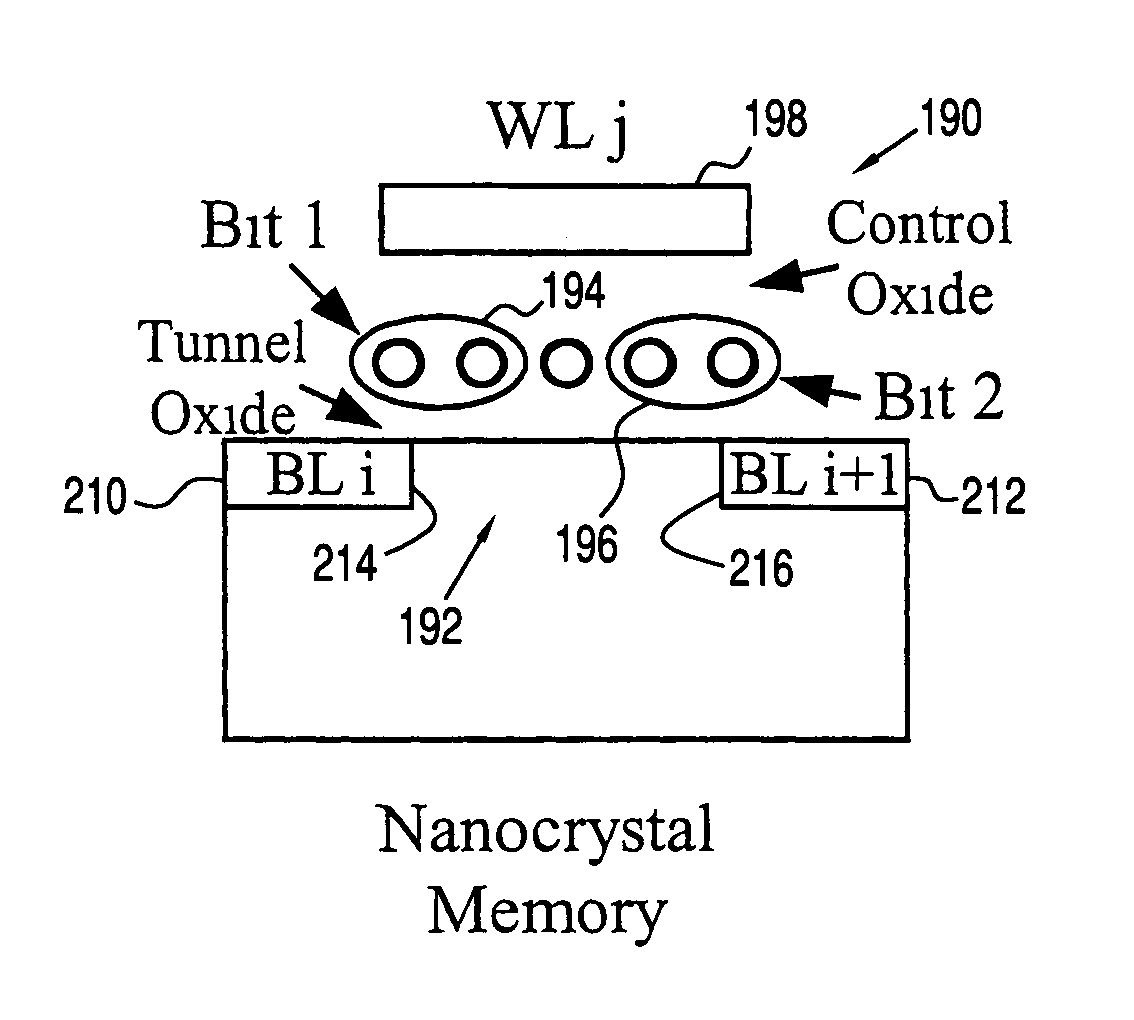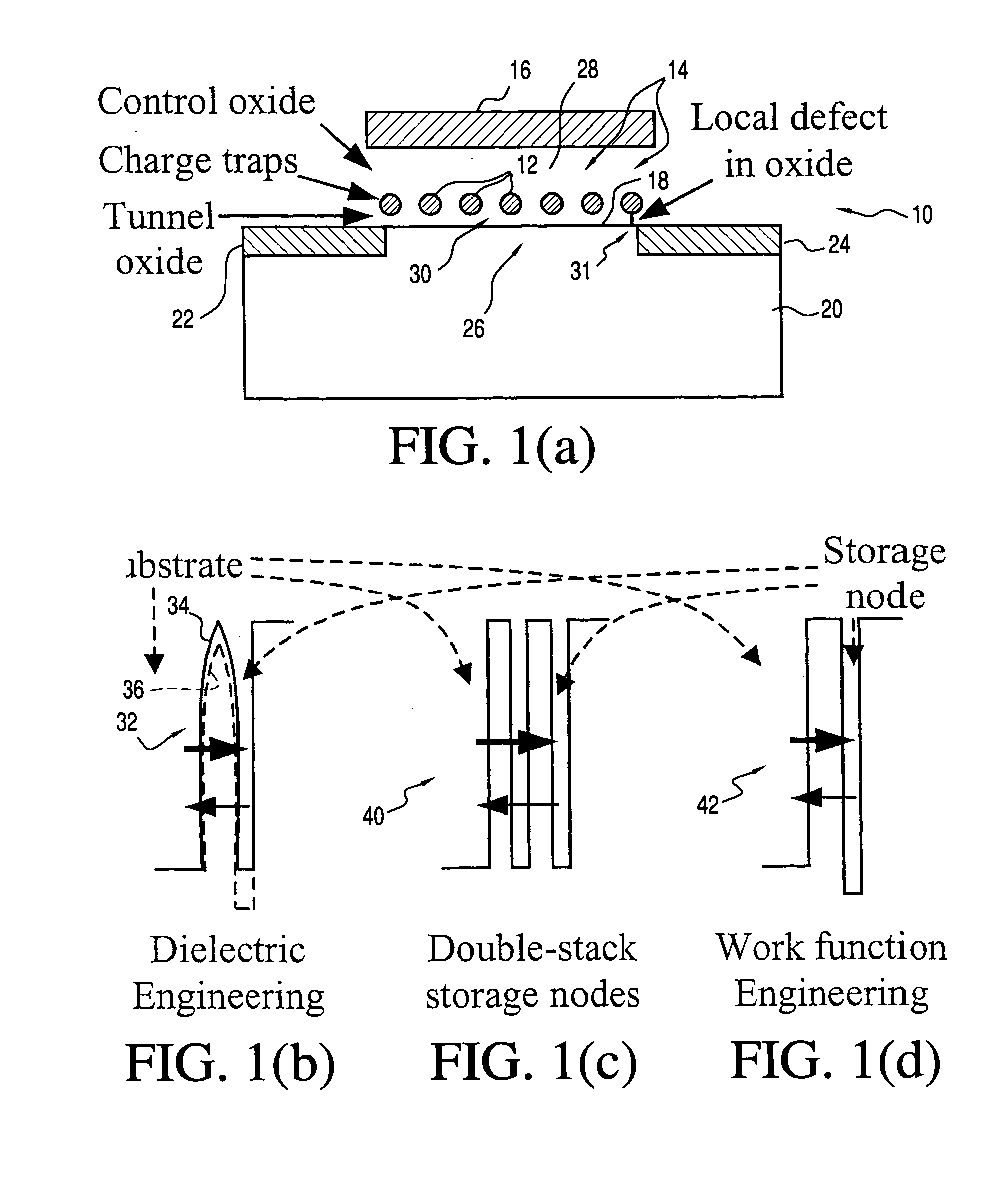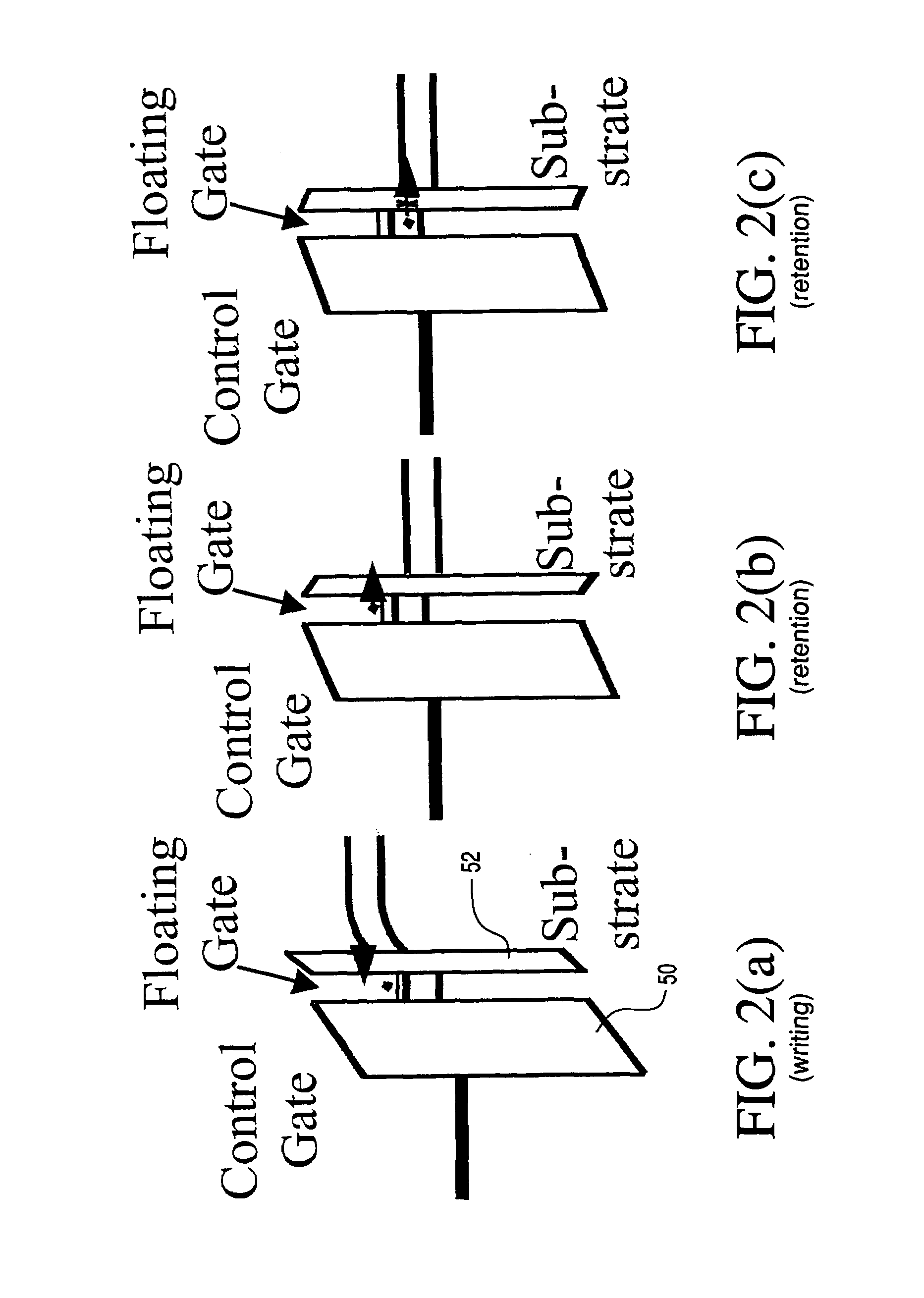Multibit metal nanocrystal memories and fabrication
a metal nanocrystal and memory technology, applied in the field of multi-bit metal nanocrystals, can solve the problems of difficult fabrication of high-density drams, high power consumption of constant refresh operations, flash memories with longer than 10 years of retention time, etc., and achieve the effect of improving the performance of memory cell devices
- Summary
- Abstract
- Description
- Claims
- Application Information
AI Technical Summary
Benefits of technology
Problems solved by technology
Method used
Image
Examples
Embodiment Construction
[0042]Turning now to a more detailed description of the invention, FIG. 1(a) illustrates in diagrammatic form a schematic of a memory cell 10 having discrete charge storage elements or nodes 12, which function as charge traps, embedded in an oxide layer 14, or gate dielectric, between a control gate electrode 16 and the surface 18 of a semiconductor substrate 20. Source and drain regions 22 and 24, respectively, are located on the substrate on opposite sides of a channel region 26, which is adjacent the location of the charge storage elements 12. The oxide material between the gate 16 and the charge storage elements 12 is referred to herein as the control oxide 28, while the oxide material between the elements 12 and the surface 18 is referred to as the tunnel oxide 30.
[0043]As illustrated in FIG. 1(a), when stored in discrete traps or nodes, charges are more immune to the leakage caused by localized oxide defects, such as the defect illustrated at 31, thus improving the device rete...
PUM
 Login to View More
Login to View More Abstract
Description
Claims
Application Information
 Login to View More
Login to View More - R&D
- Intellectual Property
- Life Sciences
- Materials
- Tech Scout
- Unparalleled Data Quality
- Higher Quality Content
- 60% Fewer Hallucinations
Browse by: Latest US Patents, China's latest patents, Technical Efficacy Thesaurus, Application Domain, Technology Topic, Popular Technical Reports.
© 2025 PatSnap. All rights reserved.Legal|Privacy policy|Modern Slavery Act Transparency Statement|Sitemap|About US| Contact US: help@patsnap.com



